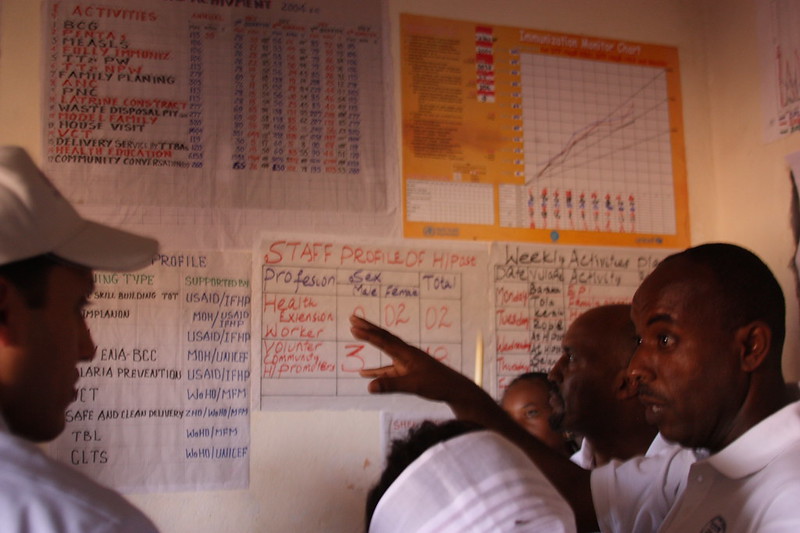Last week we published a new paper, Can Africa Be A Manufacturing Destination?, that highlights the persistence of high labor costs in many countries in sub-Saharan Africa. This led to a lively debate on Twitter, initiated by Chris Blattman at the University of Chicago.
Blattman writes:
This to me is the biggest, most important, least understood issue in African dvpt: high level of industrial wages relative to productivity https://t.co/dCxOaURwX3
— Chris Blattman (@cblatts) October 17, 2017
And adds:
If you are looking for a dissertation topic this one is huge.
— Chris Blattman (@cblatts) October 17, 2017
Several bloggers and academics responded to Blattman’s tweet, sharing their views as to why labor costs are so high. Tom Westland at the University of Cambridge writes:
possible theory: wages were high and workers bargained for strong protections when land-labour ratio was high,...
— Tom Westland (@tomwestland) October 17, 2017
..and the institutional protections may be even stickier than wages in the LR
— Tom Westland (@tomwestland) October 17, 2017
& of course, high public sector wages can have positive effects (eg ↑ investment in human K so as to compete for limited pool of jobs)
— Tom Westland (@tomwestland) October 17, 2017
To which Blattman responds:
In Africa I think it may have more to do with: (1) high cost base of economy, (2) distortions in labor markets from large aid/public sector
— Chris Blattman (@cblatts) October 17, 2017
Dani Rodrik also weighs in:
Is this not explained by the high resource rents/foreign transfers and the correspondingly high level of demand for services? https://t.co/c3CWWUo6fv
— Dani Rodrik (@rodrikdani) October 18, 2017
Agree this plays a role in slowing mftg growth but I don't know that it explains high real wages. https://t.co/5dtzqusTi1
— Chris Blattman (@cblatts) October 18, 2017
As long as nontradables (services) are more labor intensive, which they are in LICs, the real exchange rate and the real wage move together. https://t.co/fwS8Z6DENg
— Dani Rodrik (@rodrikdani) October 18, 2017
Johan Fourie at Stellenbosch University has a different view:
Urban, formal-sector labour played large role in independence movements. Was awarded with high wages despite little improv in productivity.
— Johan Fourie (@JohanFourieZA) October 17, 2017
To which economist Grieve Chelwa responds:
(1/N) So the forces driving wage formation have persisted till today?
— Grieve Chelwa (@gchelwa) October 18, 2017
(2/N) If so that would be interesting given that today's manufacturing firms aren't the firms of the immediate post-independence period.
— Grieve Chelwa (@gchelwa) October 18, 2017
(3/N) In between then and now manufacturing (or industrialisation broadly) has receded and then made a small resurgence recently.
— Grieve Chelwa (@gchelwa) October 18, 2017
(4/N) Also, the power of unions to influence wages and to influence political outcomes has dwindled precipitously in btwn then & now
— Grieve Chelwa (@gchelwa) October 18, 2017
Our colleague Paddy Carter chimes in:
Empirical attempts to identify aid=>real exchange rate tend not to. So what's aid=>high wages mechanism (outside aid sector itself)
— Paddy Carter (@CarterPaddy) October 17, 2017
Pseudoerasmus, a prolific blogger, reminds everyone that unit labor costs could look very different from wages or total labor costs. He says:
my wager: ratio of output per worker-hour Bangladesh-Kenya >>> ratio of real wages Bangladesh-Kenya
— Pseudoerasmus (@pseudoerasmus) October 18, 2017
… and concludes in response to data posted by Asif Dowla:
nonetheless the problem is clearly both high wages & low productivity, & it seems more feasible to raise productivity than reduce wages...
— Pseudoerasmus (@pseudoerasmus) October 18, 2017
Howard French, an expert on China at Columbia University, comments on the story in Quartz Africa on our paper:
There will be no next China, in Africa, or anywhere else. China's takeoff is bound up in unique set of historical circumstances. https://t.co/OGdX4a1vDd
— Howard French (@hofrench) October 15, 2017
African transformation will depend on much more mixed model of services, plus some opportunistic manufacturing. Intra-African trade is key.
— Howard French (@hofrench) October 15, 2017
And Neil Gregory from the International Finance Corporation wrote in an email about gender disparities:
Bangladesh, the key comparator, is notable for very high female participation in manufacturing. If there are cultural/economic barriers to such participation in Africa, that would drive up wages as women may not be available for hire to the same extent. You could look at differences in female labor force participation to estimate this effect.
Our Response
We have tried to look at some of these hypotheses in the context of Purchasing-Power-Parity. Using the 2011 ICP data, Gelb and Diofasi confirm that African countries tend to be more costly than countries with similar incomes in other parts of the world. Aid inflows and a negative current account balance are correlated with higher price levels (the latter less strongly), while FDI and remittances are not. But even though aid dependence is associated with a higher PPP price level, this does not seem to account for the “Africa effect.”
Another possibility is that the Africa effect reflects widespread underestimation of income levels. The recent upwards revisions of GDP in several countries, including Ghana (60%), Nigeria (89%), Kenya (25%), and Zambia (25%) suggest that this could be the case for many countries on the continent. Taking a linear approximation to the relationship between the logs of income and PPP, an illustrative 30 percent increase in income per head would correspond to a 5.3 percent increase in the PPP price variable. This could account for as much as a third of the Africa effect.
Turning to structural features, another possible cause that we considered was low agricultural productivity and weak domestic supply chains. Food is relatively costly in the PPP bundle in poorer countries, and particularly so in many African countries. On average, the food price level is about 50 percent higher in low- and middle income countries than the overall price level in the economy. As shown in the recent ACET report, agricultural imports have been rising with urbanization. Much urban food is imported; this makes it harder to support a low-cost labor platform for manufacturing.
And the point on gender may be very relevant. The Asian countries have been excellent in drawing on the young female labor force. Among other things this requires a degree of operating and transit security, especially for shift work.
We would like to thank all of the researchers who shared their views on this topic! We will be continuing our work in this area and we hope that others will also try to answer the question of why industrial labor costs are so high in many countries in Africa.
Disclaimer
CGD blog posts reflect the views of the authors, drawing on prior research and experience in their areas of expertise. CGD is a nonpartisan, independent organization and does not take institutional positions.





